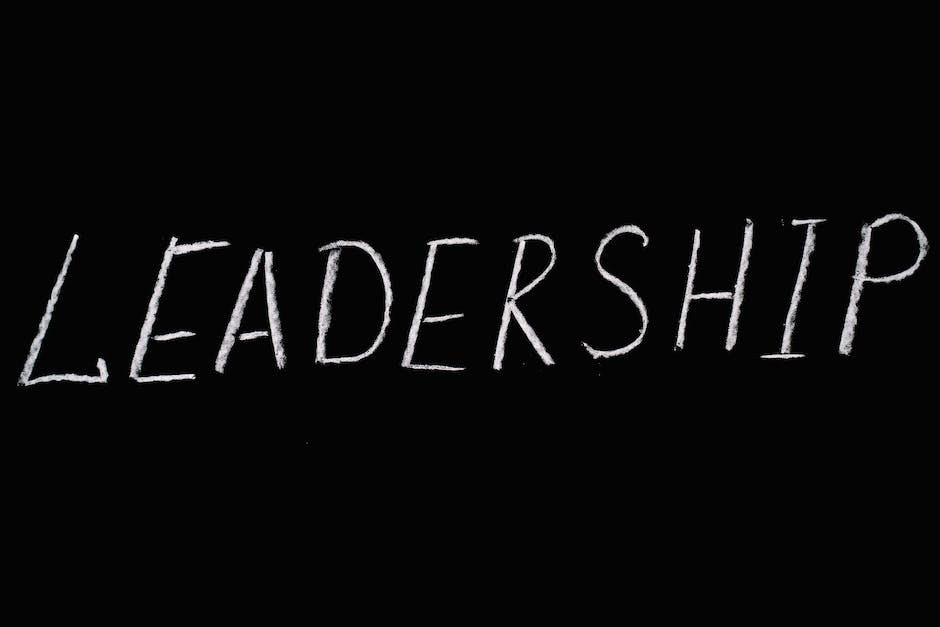Contents
Evolution of Leadership Styles
A leadership style, in essence, is how leaders manage a group and make decisions. These styles have gone through significant changes throughout history, and they continue to evolve to meet the shifting needs of society and organizations.
Initially, leadership styles adhered to the traditional models where one person had absolute authority. Some of the most common traditional styles included:
- Autocratic: Also known as the “I’m in charge” model. Here, leaders make decisions without consulting their teams.
- Bureaucratic: This style was all about playing by the rules and following procedures to the letter.
- Democratic: Involves team members in the decision-making process.
Modern Leadership Styles
As society evolved and peoples’ values changed, the concepts of hierarchy and leadership also shifted. More modern styles emerged that are more flexible and employee-centric:
- Transformational: These leaders inspire and motivate their team by setting high expectations and providing support to reach those goals.
- Servant: The leader’s primary goal here is to serve their team, taking care of their needs first. This style focuses on empowerment and empathy.
- Laissez-faire: This “let them do” method gives team members freedom to make decisions. The leader provides minimal supervision.
Evolution Factors
Understanding the evolution of leadership styles is only half the battle. To get a complete understanding, let’s delve into the contributing factors that drove these changes:
- Societal values: As society’s values shifted towards equality and shared decision-making, leadership styles also evolved to accommodate for these changes.
- Organizational needs: Modern businesses are often more about innovation and adaptability. Hence, leadership styles now encourage creativity and autonomy.
- Technological advancements: Technology has brought remote working and virtual teams into the mix. This shift has necessitated more flexible, adaptable leadership styles.
Relevance in Business
So, why is this evolution important in business? The answer lies in understanding team dynamics and workplaces. For instance:
- Motivation: Different leadership styles can strongly influence a team’s motivation, which directly impacts creativity and innovation – vital elements in marketing.
- Decision-making: The style of leadership can determine how decisions are made, affecting everything from campaign planning to issue resolution.
- Organizational Culture: Leadership styles subtly shape a company’s culture. This culture can define how external relationships are managed – an essential aspect of successful marketing.
To Consider…
Leadership is not one-size-fits-all. The best leaders adapt their styles to meet the needs of their team and organizational goals. As societal values and organizational needs continue to evolve, so will leadership styles.

Key Characteristics of Modern Leadership Styles
Having already ventured into various traditional and modern leadership styles such as autocratic, bureaucratic, democratic, transformational, servant, and laissez-faire, it is only fair that we take a closer look at the distinct characteristics that define these leadership styles.
Authoritative Leadership Style
Here, the business leader runs a tight ship, with clear instructions, and expects their decisions to be executed without question. They are the decision-making hub of the organization, directing the course and pace of the business. While it may seem harsh, this style can be highly effective in crisis situations or instances where there’s lack of team experience.
Participative or Democratic Leadership
The primary characteristic of this style is active involvement of employees in the decision-making process. The leader serves as a guide, leading discussions and encouraging participation to make employees feel valued and invested in the company’s mission, fostering a spirit of cooperation. This style often leads to increased job satisfaction and empowerment.
Transformational leaders are all about inspiring a shared vision. They focus on transforming the business culture with the theory that a strong positive culture can bring about great productivity and performance. By inspiring and motivating their team with clear vision and enthusiasm, they foster a culture of innovation.
Visionary Leadership
A visionary leader is noted for their strong ability to visualize the future. They lead the team through inspiration rather than authority, setting clear goals and fostering an environment that encourages team members to innovate in order to achieve these goals. While this can lead to fantastic results, it’s critical to ensure that the entire team is on board with the leader’s vision.
Transactional Leadership
For transactional leaders, it’s all about structure and getting the work done. These leaders believe in a clear reward and penalty system. Good performance is acknowledged and rewarded, poor performance is rectified, and if it persists, penalized. While this approach may not foster a warm and fuzzy work environment, it ensures tasks are executed effectively and milestones are reached on time.
Servant Leadership
This style is centered around the leader acting as a servant to the team, prioritizing their needs and focusing on their growth. Servant leaders encourage their teams to be the best by serving them, not by commanding them. This style creates a cooperative spirit and can lead to high morale and engagement levels.
Laissez-faire or Hands-off Leadership
The defining characteristic of this style is delegation. Laissez-faire leaders are hands-off, giving their team freedom to execute tasks on their own terms. This style works best when the team is highly skilled and can be trusted with a large degree of independence.
Every leadership style has its place and purpose, depending on the situation, the nature of the organization, and the team’s collective personality. Smart leaders know that adaptation and flexibility are key in utilizing these styles efficiently for successful management.

Overview of Modern Leadership Styles
Firstly, we have transformational leadership – a style where leaders inspire their team to go beyond what’s expected of them through a combination of effective communication and setting high, yet achievable standards. Leaders under this category often lead by example, fostering an environment of respect and collaboration.
This has shown to significantly boost productivity, innovation, and job satisfaction among employees, thus pointing towards improved organizational performance.
Next up, we have the visionary leadership style. A visionary leader is effectively able to strategize a long term vision and channel the team’s efforts towards reaching this goal.
Often creative, ambitious, and risk-takers, these leaders can inspire their teams to think outside the box and approach tasks with enthusiasm and creativity. In marketing, for instance, this leadership style can drive the team to develop groundbreaking campaigns that set the organization apart from competitors.
Moving along, the transactional leadership style, which primarily focuses on supervision, organization, and achievement of performance metrics also has its appeal. This rigid style provides employees a clear structure, preventing confusion about roles and tasks. Teams – especially those who prefer routine and stability, such as accounting or manufacturing units- find this style effective and comfortable.
Unlike traditional styles, where the leader’s main goal is to optimize organizational outcomes, servant leaders prioritize their team’s welfare. They aim to enhance their team’s personal growth, involvement, and autonomy, which in turn, encourages employees to deliver their best.
Studies have indicated that this style fosters a high-trust environment that increases motivation, job satisfaction, and subsequently, helps in reducing employee turnover rate.
Finally, the laissez-faire or “hands-off” leadership style gives team members a significant amount of freedom in how they do their work. Leaders with this style often provide resources and advice, but ultimately put decision-making in the hands of their team members. This style is particularly beneficial in creative teams, such as an advertising or design team where individual creativity is critical for success.

Applying Modern Leadership Styles
Practical Application of Leadership Styles
Let’s start with understanding how these leadership styles you’ve learnt about can be applied in practical scenarios. Remember, there’s no one-size-fits-all approach to leadership. What works in one situation might not work in another and often leaders may blend styles to best fit a particular situation.
Using Authoritative Leadership in High-Stakes Decisions
Imagine a situation where a critical company-wide decision has to be made swiftly. An authoritative leader seizes the moment, taking the reins firmly, making and implementing the decision. An authoritative leadership style can be indispensable when dealing with crisis situations or when drastic changes are required. However, it is also necessary to use it sparingly to maintain an environment that encourages creativity and participation.
Encouraging Coordination Through Democratic Leadership
Picture a team brainstorming for a new marketing campaign. The team leader, using a democratic style, guides discussion but encourages ideas and feedback from everyone. By doing so, they foster a sense of ownership among team members, resulting in an improved commitment to the campaign.
Forging Ahead with Visionary Leadership
Placed at the helm of a stagnating company, a visionary leader could kickstart innovation and growth. Through clearly communicating their vision for the company, they can inspire and motivate employees to strive towards this collective goal. Moreover, in the field of marketing, this style can be incredibly beneficial when launching a new product or tackling a new market.
Applying Leadership Styles to the Future
As we look ahead, several factors indicate leadership styles may further evolve and diversify. We’re already witnessing a shift in the workplace with more emphasis on remote working and increased diversity in teams. These trends, influenced by societal changes and technological advancements, necessitate adaptable and flexible leadership.
Embracing Flexibility
Successful future leaders will need to quickly and effectively adapt their leadership styles to fit the situation. They’ll also need to juggle various styles to cater to different team members’ needs and maintain a harmonious and productive work environment.
Facilitating Remote Work
As remote work becomes more prevalent, leaders with a hands-off, or laissez-faire, style could thrive. They can empower their team members with autonomy, trust their competencies, and only intervene when necessary. This, however, requires an even better communication system and more self-disciplined employees.
Nurturing Diversity
Diverse teams will require leaders skilled in servant leadership, who can prioritize the needs of their teammates, foster an inclusive environment, and ensure the team works harmoniously.

Key Takeaways
- Modern leadership styles have demonstrated their effectiveness in fostering a more collaborative and productive work environment.
- Empirical evidence and various case studies consistently show that these styles positively influence employee satisfaction and retention, thereby improving overall organizational productivity.
- Aspiring leaders are therefore encouraged to embrace these modern practices, adapt them to their unique scenarios, and stay abreast with potential shifts in leadership trends.
- Ultimately, the future of leadership rests on leaders’ ability to continuously evolve, genuinely empathize with their teams, drive innovation, and shape a healthy corporate culture in the face of changing societal and organizational contexts.

